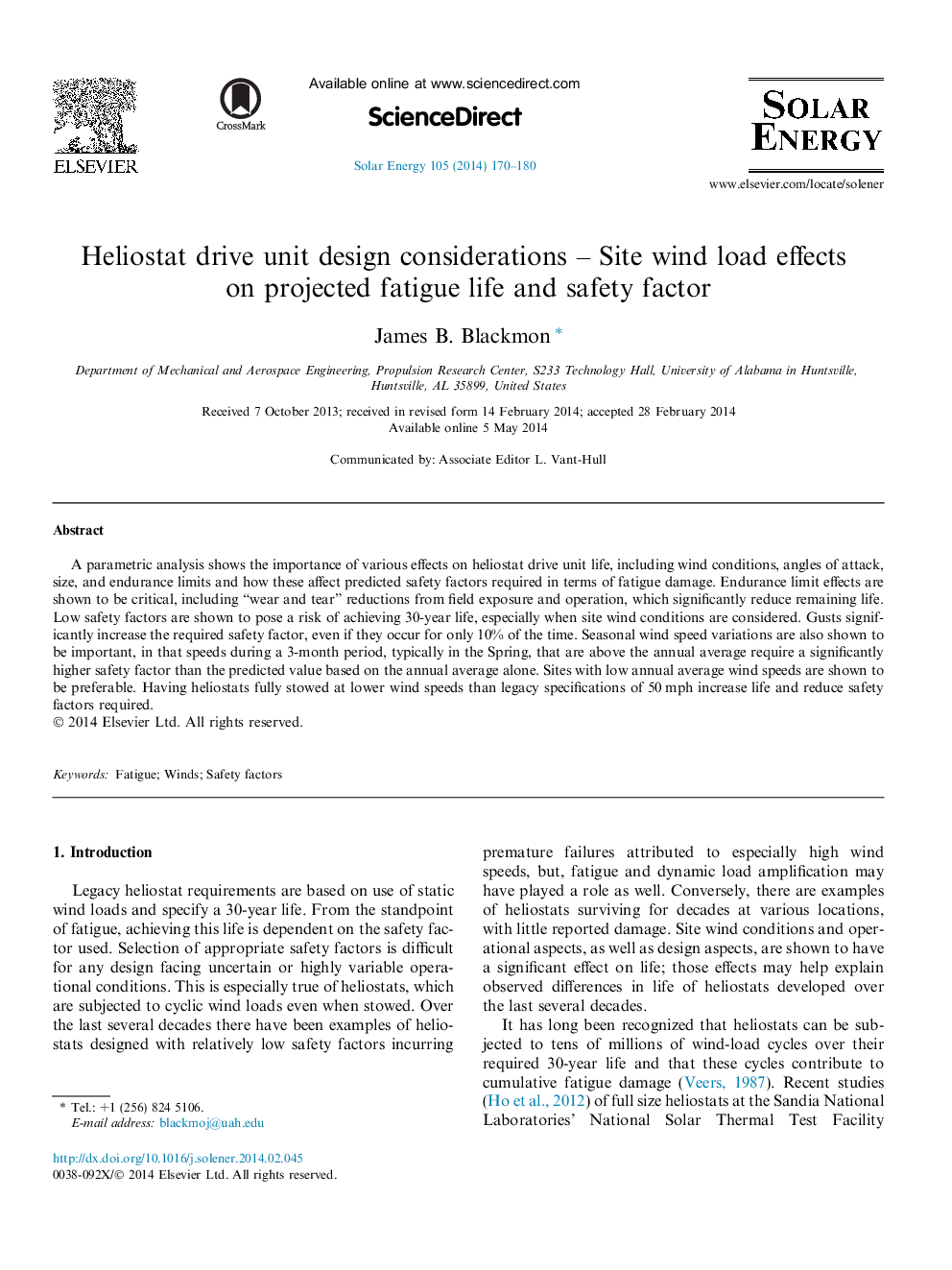| کد مقاله | کد نشریه | سال انتشار | مقاله انگلیسی | نسخه تمام متن |
|---|---|---|---|---|
| 1550043 | 1513113 | 2014 | 11 صفحه PDF | دانلود رایگان |

• Fatigue life predictions determined by quasi-static cyclic vortex shedding loads.
• Predicted safety factors for 30-year life exceed low values typically used.
• Wind gusts and seasonal wind speed variations further increase safety factors.
• Realistic endurance limits increase safety factors required.
A parametric analysis shows the importance of various effects on heliostat drive unit life, including wind conditions, angles of attack, size, and endurance limits and how these affect predicted safety factors required in terms of fatigue damage. Endurance limit effects are shown to be critical, including “wear and tear” reductions from field exposure and operation, which significantly reduce remaining life. Low safety factors are shown to pose a risk of achieving 30-year life, especially when site wind conditions are considered. Gusts significantly increase the required safety factor, even if they occur for only 10% of the time. Seasonal wind speed variations are also shown to be important, in that speeds during a 3-month period, typically in the Spring, that are above the annual average require a significantly higher safety factor than the predicted value based on the annual average alone. Sites with low annual average wind speeds are shown to be preferable. Having heliostats fully stowed at lower wind speeds than legacy specifications of 50 mph increase life and reduce safety factors required.
Journal: Solar Energy - Volume 105, July 2014, Pages 170–180